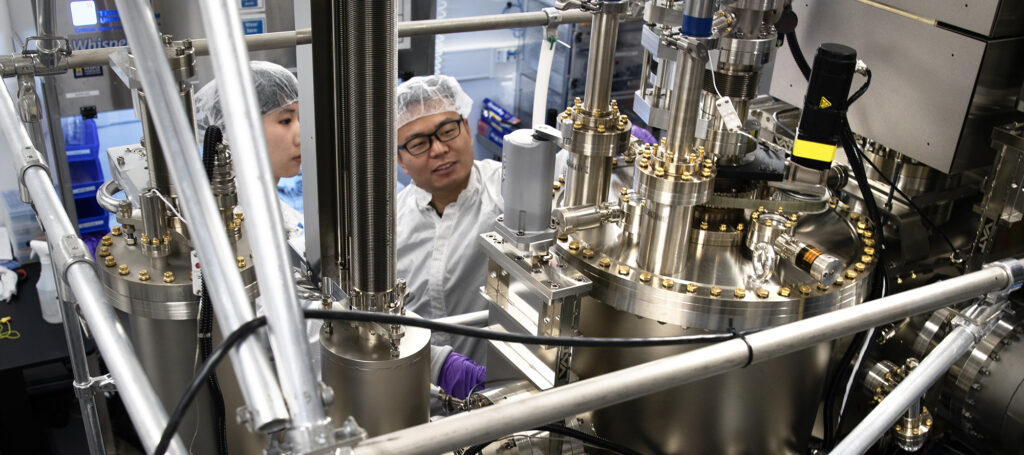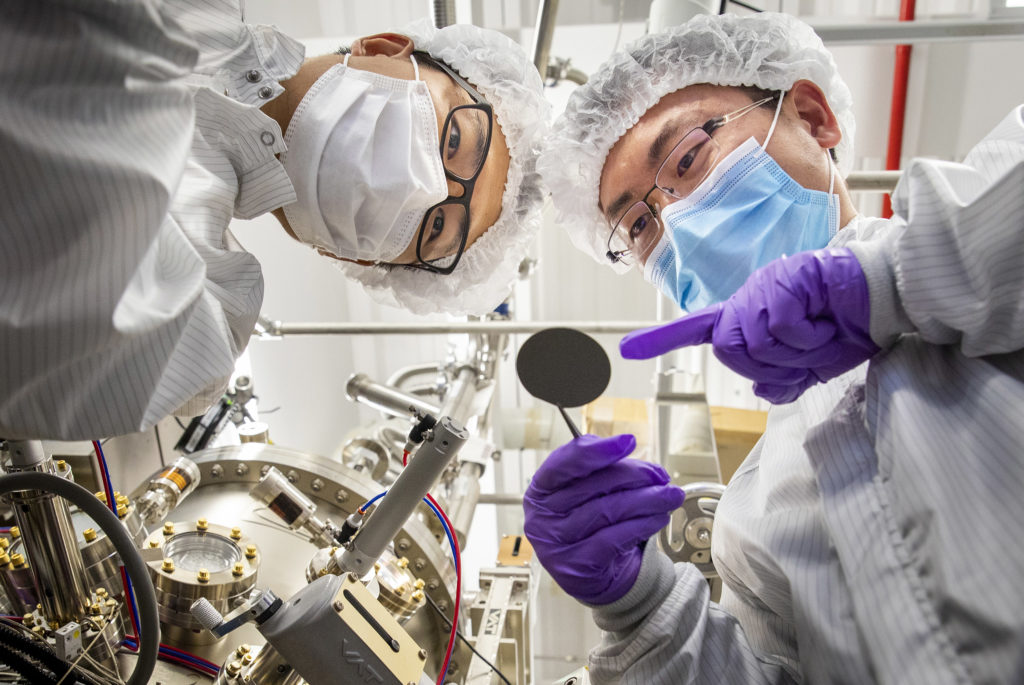From new material to device: Ferroelectric HEMT could be a game changer for next generation electronics

Researchers at the University of Michigan have developed a reconfigurable, ferroelectric high electron mobility transistor (FeHEMT) that is ideal for high frequency and high power applications. Areas of particular interest for this device are reconfigurable RF/microwave applications as well as memory devices in next generation electronics and computing systems.
“By realizing this new type of transistor,” said Prof. Zetian Mi who led the research, “it opens up the possibility for integrating multifunctional devices, such as reconfigurable transistors, filters, and resonators, on the same platform – all while operating at very high frequency and high power. That’s a game changer for many applications.”
Mi’s team recently reported on a breakthrough nanoscale CMOS-compatible ScAlN ferroelectric semiconductor material that could serve as a bridge between mainstream and next-generation computing. It was the first ferroelectric nitride semiconductor. They quickly followed this with the current demonstration of a ScAlN/AlGaN/GaN ferroelectric HEMT transistor.
This is a pivotal step toward integrating nitride ferroelectrics with mainstream electronics.
Prof. Zetian Mi
The device structure was grown using molecular beam epitaxy (MBE), which allowed the team to control the thickness of the material at an atomic scale. MBE is also one of the preferred methods to manufacture mainstream nitride-based devices.

Because the device is ferroelectric and tunable, the polarization can be switched back and forth as needed while operating the device to improve its performance – even in the subthreshold realm. These characteristics breed new functionalities and emerging applications, according to the authors, giving the boost in performance needed for high-power, high-frequency electronics.
HEMTs are typically found in the high-frequency, high-power amplifiers used for communications in cell phones. But this newly-developed ScAlN/AlGaN/GaN FeHEMT offers additional advantages.
“We can make our ferroelectric HEMT reconfigurable,” said Ding Wang, research scientist and first author on the published research. “That means it can function as several devices, such as one amplifier working as several amplifiers that we can dynamically control. This allows us to reduce the circuit area and lower the cost as well as the energy consumption.”
“This is a pivotal step toward integrating nitride ferroelectrics with mainstream electronics,” said Mi, who sees this as the beginning of an exciting journey in the development of next-generation electronics based on III-nitrides.
Offering speeds up to 100x that of silicon, as well as high efficiency and low cost, gallium nitride (GaN) semiconductors are seen as the future, with the potential to be the first material to displace silicon as the preferred material for electronic devices.
The published research, “Fully Epitaxial, Monolithic ScAlN/AlGaN/GaN Ferroelectric HEMT,” has been selected as a Featured Article in Applied Physics Letters. It was authored by Dr. Ding Wang, Dr. Ping Wang, Minming He, Jiangnan Liu, Shubham Mondal, Mingtao Hu, Dr. Danhao Wang, Yuanpeng Wu, Dr. Tao Ma (instrument scientist at MC2), and Prof. Zetian Mi.
Technical support was provided by the Lurie Nanofabrication Facility (LNF) and Michigan Center for Materials Characterization, also known as (MC)2. Early funding for this area of research was provided by the College of Engineering through their Blue Sky initiative and by the Office of Naval Research.
 MENU
MENU